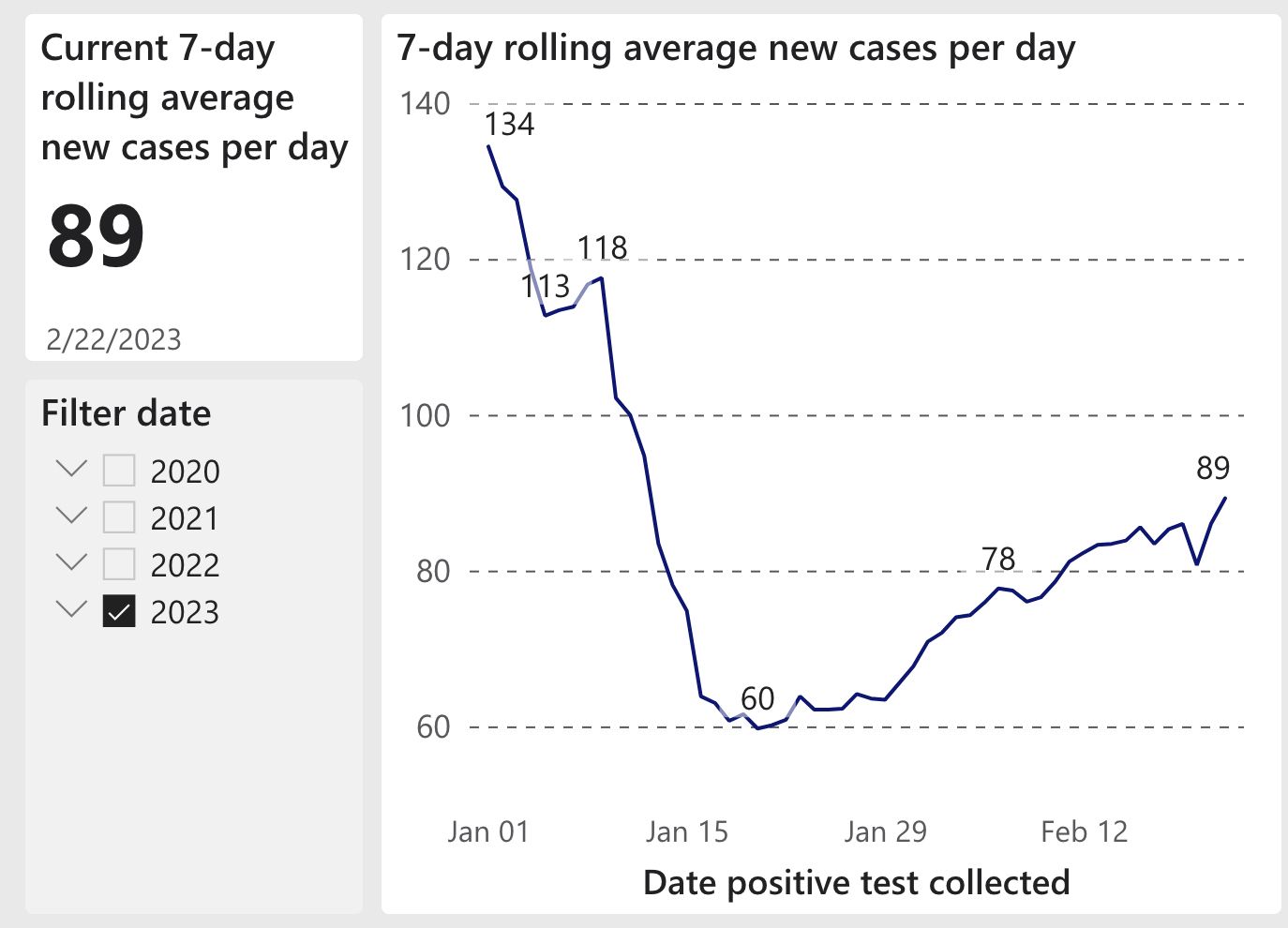This has been a long time coming. And yes, COVID is still with us, but the daily and weekly case counts we've been tracking for nearly three years are no longer that useful, so it's time to move on.
California ended its pandemic state of emergency on Tuesday. And despite the fact that wastewater surveillance indicates a new uptick in COVID cases in the Bay Area and elsewhere, the message, broadly, is that the endemic stage is nigh, and it is up to individuals to assess their own risk level and live their lives accordingly.
Nationally, the Biden administration announced plans to end the COVID-19 state of emergency on May 11. And while those with underlying conditions and the elderly will likely have to continue taking extra precautions for the foreseeable future, most of the country has thrown caution to the wind and gone back to business as usual.
SFist began tracking daily COVID case counts in the nine counties of the Bay Area the first week of April, 2020, around the time that the counties launched their dashboards tracking new cases of the novel virus. We had all been locked down for two weeks at that point, and if you had told me that I would still be updating spreadsheets of COVID cases and deaths three years later, I might have lost it.
Our COVID data and graph page has changed slightly over time, and around the new year we, like multiple Bay Area counties, began providing updates only weekly. Still, these weekly updates have become increasingly out of step with the more reliable gauges of wastewater surveillance and hospitalizations.
Since at-home tests became widely available and plentiful in 2022, the official case counts — based on PCR lab tests — began growing less and less indicative of the real situation on the ground. And in the last two weeks, Marin, Solano, and San Mateo counties' health officers retired their COVID data surveillance dashboards, with San Mateo Health's Chief Louise Rogers writing, "With the rise in at-home testing that is not reported to us, case and testing data do not provide meaningful intelligence of the virus’s presence, leading us to sunset those dashboards."
Below are the latest wastewater surveillance and PCR case-count graphs for San Francisco, by way of example.


While both graphs show an uptick since mid-January, the SF daily average case count chart doesn't show nearly the rise back to mid-December levels of actual virus that the wastewater surveillance shows.
So, starting today, March 2, SFist's county-by-county case count page will be retired.
As of last Friday, the Bay Area had seen 1,845,221 officially counted cases since the start of the pandemic — but the real number is likely far higher, and that number fails to have useful meaning anymore.
What has more meaning is the Bay Area death toll, which as of last week stood at 9,969, and may cross the 10,000 mark by Friday. (As of today, SFist finds 24 additional Bay Area deaths to add to that tally, bringing it to 9,993, with Santa Clara County yet to give an update for the week.) While mortality from COVID has been far lower in our region than in many parts of the country, 10,000 deaths is an enormous toll by any stretch.
San Francisco has seen 1,163 COVID deaths to date.
You can and likely should continue paying attention to virus prevalence in your community, and you can do that by monitoring the state health department's wastewater surveillance dashboard — which will remain on SFist's COVID data page, should you keep that bookmarked.
SFist will also continue to monitor the regional outlook for the disease as it hopefully recedes into solid endemic territory, and we will provide you with updates as they arise.
Cases continue to be tallied around the country, but one of the primary sources of case data since the start of the pandemic, hosted by Johns Hopkins University's website, has also ceased being maintained.
Experts continue to warn that COVID re-infections, even among the vaccinated, may have long-term health risks that shouldn't be scoffed at. Three years in, there has barely been enough time to figure out the true toll COVID will have on long-term public health — or to fully understand the potentially devastating effects of Long COVID.
But television ads, at least in California, are encouraging everyone with underlying conditions to seek Paxlovid treatment at the first sign of a COVID infection. And, hopefully, most who has been infected one or more times won't have to face serious, lingering health impacts.

